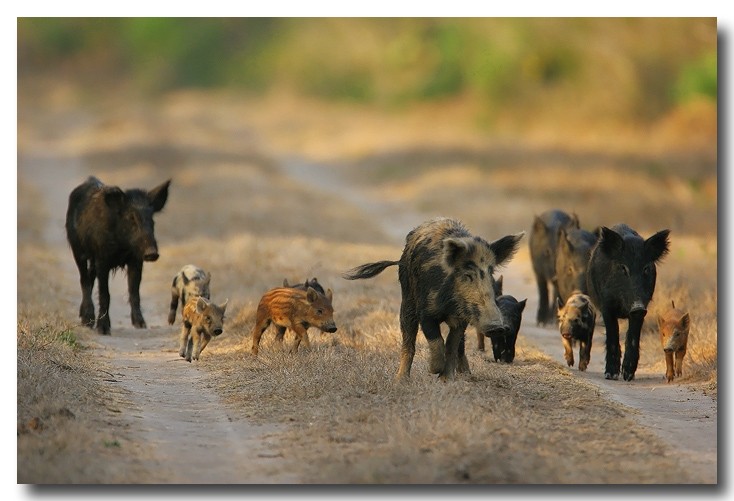
Kit Mochan from ABC Ruralhas put together an article on the spread and problems that feral pigs are causing as their population is set to out number the Australian human population.
Populations of feral pigs are popping up across Australia. The author believes illegal hunters seeding the animals in new areasis playing a huge part in their distribution.
Feral pigs of the species Sus scrofa are one of the most successful land mammals in the modern world, spread by humans to every continent except for Antarctica.
When Commodore Arthur Phillip arrived with the First Fleet in Botany Bay, 49 hogs were brought ashore to feed the newly established colony.
Australia is now home to around 25 million feral pigs.
“They were farmed or managed in a sort of semi-feral state [and] free-range populations would have been kicked off from there,” said Dr Peter Adams, who has been researching feral pigs at Murdoch University and the WA Department of Agriculture for almost 20 years.
“Feral pigs are very fecund when it comes to reproductive capacity, sows are capable of having two litters a year, provided that the resources, food and shelter are available. Sows are breeding at six months of age and their litter sizes are on average around about six piglets per litter.
Seeding Pig Populations
The ABC reported in the past pig seeding has been dismissed by some as urban legend, but in 2015 scientists at Murdoch University in Perth used DNA to prove that pigs had been illegally introduced into new areas in Western Australia.
Using the same technology, scientists in the United States have tracked the destructive spread of wild hogs by hunters across the country.
Dr Adams said it was not a matter of “if” pigs were being dumped, it was a matter of when, where and how many.
“Unfortunately we also do have the added issue where some people who enjoy hunting pigs … do like to actually spread pigs around for we presume continued hunting enjoyment or moving pigs to areas where it’s not so far to travel to be able to hunt them,” he said.
“The illegal seeding or translocation or dumping, there are many different terms for it … of feral pigs is a practice that does occur not just in the South West but in association with feral pig populations [everywhere].
“Pigs are quite capable of moving reasonable distances on their own and when humans get involved and start moving them as well it doesn’t help the situation.”
New South Wales and Queensland have a long fought battle with feral pigs, but Dr Adams said reports of feral pigs moving into Western Australia sheep and grain heartlands was cause for concern.
“I’ve spoken with farmers who have experienced significant sorts of impacts due to pigs, whether it’s damage to pasture and loss of grazing land for livestock,” he said.
“In some extreme cases entire paddocks of crop have been lost to damage directly due to pigs.”
Hunters play a big roll in the control
Legitimate hunters are part of solution.Sporting Shooters Association of Australia WA president Ron Bryant said he did not consider the culprits accused of moving pigs around the state to be worthy of the title bestowed on them.
“I wouldn’t even call them hunters … there are other words I’d use for them that you could probably pick up,” he said.
“Whether it’s true or not, if it is a practice I find it deplorable.”
Mr Bryant, who has been shooting for more than three decades, said legitimate hunters worked with farmers, not against them by trespassing on properties or releasing a declared pest, which carries a fine of $50,000 under the state’s Biosecurity and Agriculture Management Act 2007.
“There may be one or two but I’d say generally now because pretty much by and large all our people are ticking every box they can think of to do the right thing,” he said.
“They’re not going to be … doing an activity that’s going to lose them integrity and their [gun] licence ultimately.”
“If someone was to get caught they do get the book thrown them in a massive way.”

The association sponsors the state’s Red Card for Rabbits and Foxes program, which helps farmers deal with damaging invasive pest species including pigs.
Dr Adams said coordinated community approaches, such as the Red Card program, was the most effective solution for the problem.
“The time for pig management is now the longer you wait the harder the problem is going to be,” he said.
“These animals are highly mobile, they can move across land boundaries very quickly and very easily they don’t pay attention or respect fences or boundaries — they go where they want.
“That coordinated control is going to give you your best option to put the brakes on that population as soon as possible.”

0 Comments